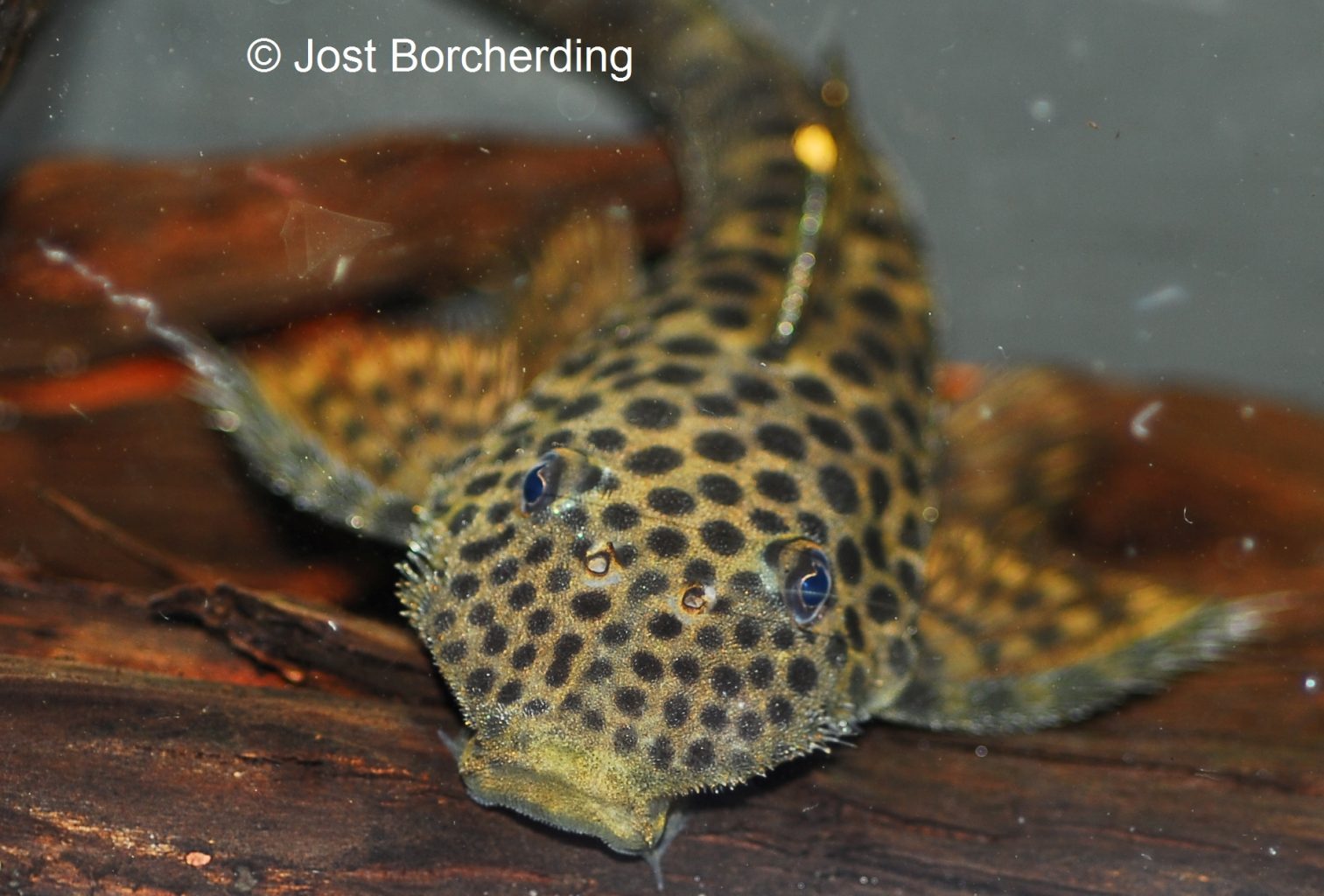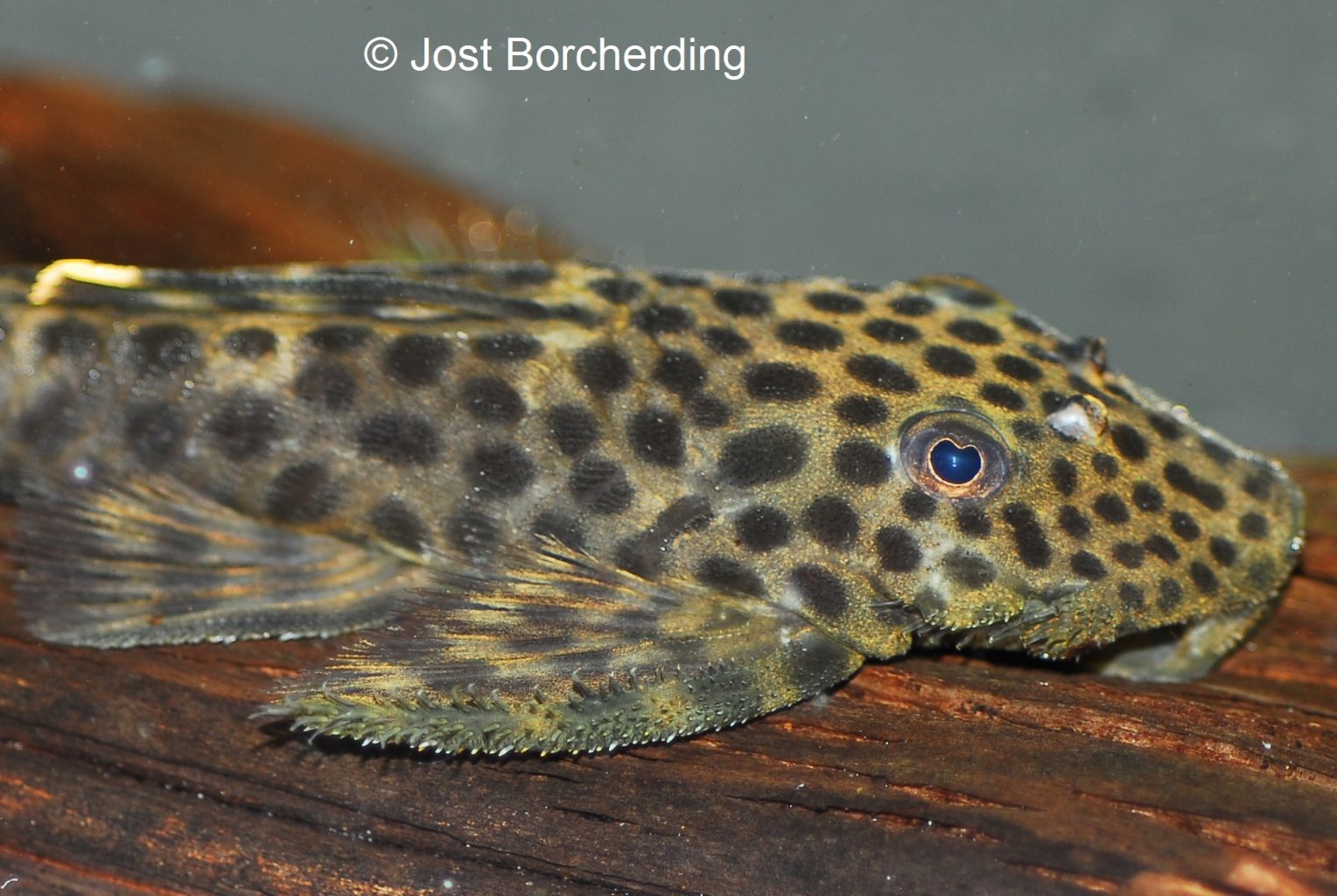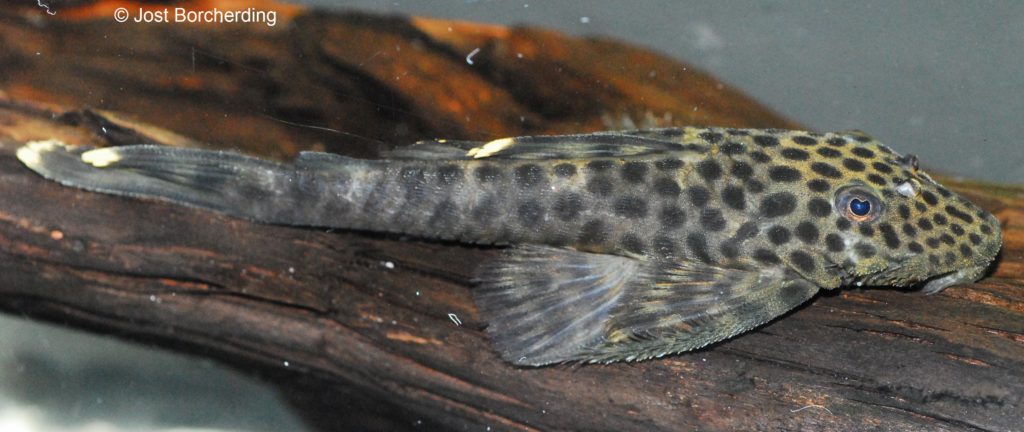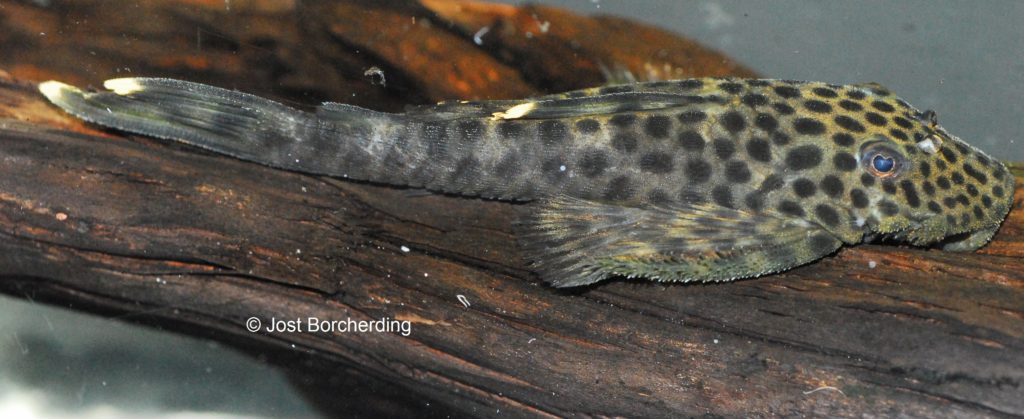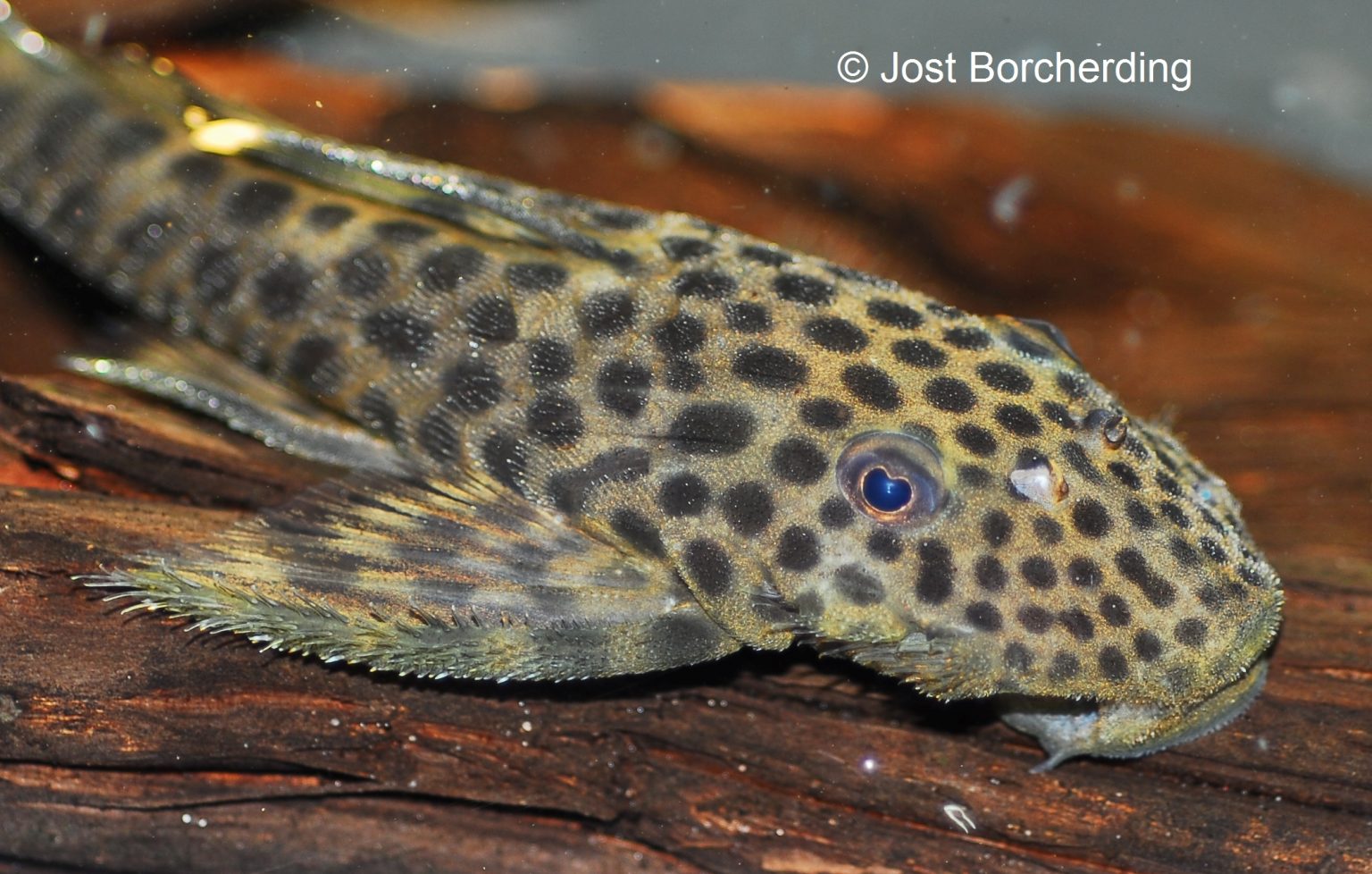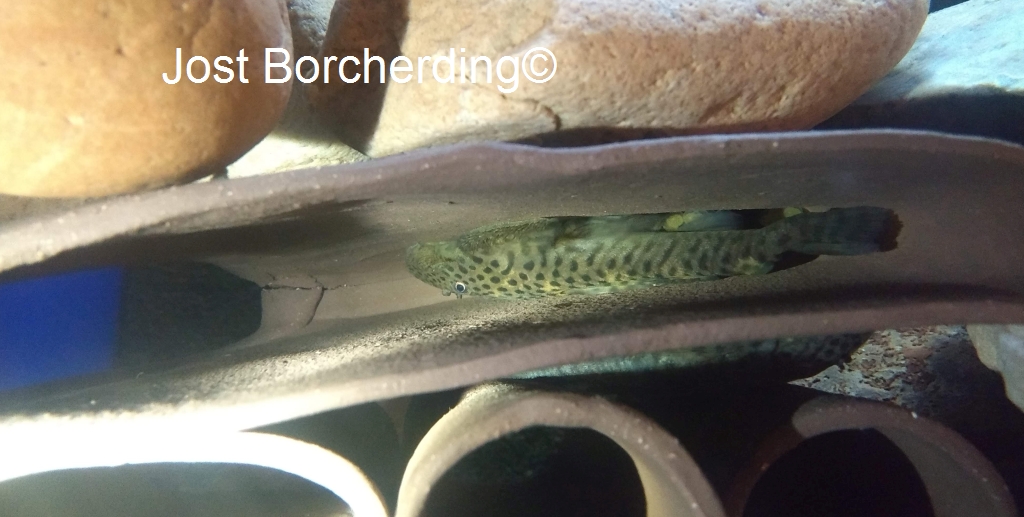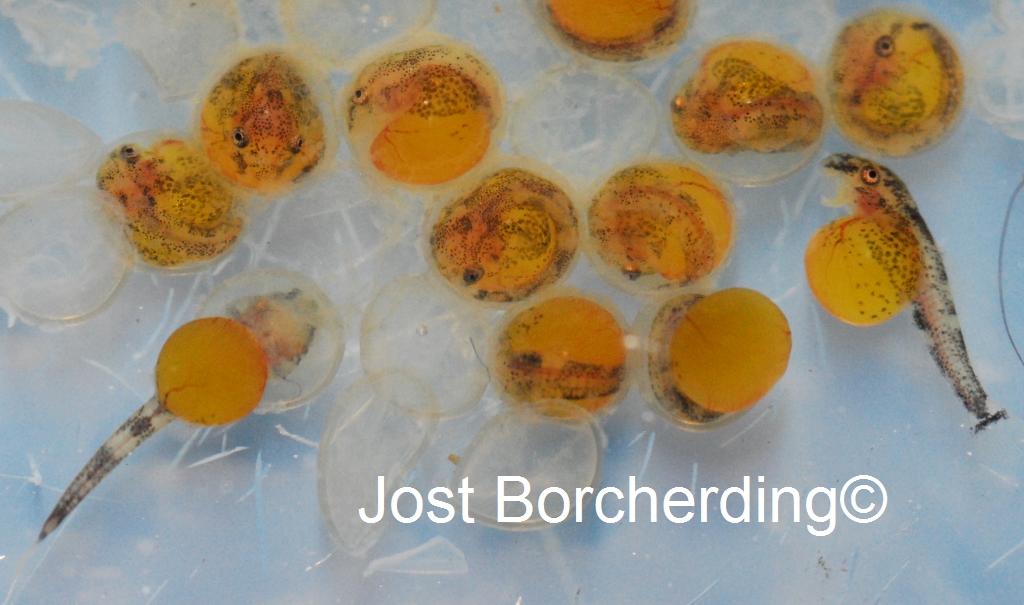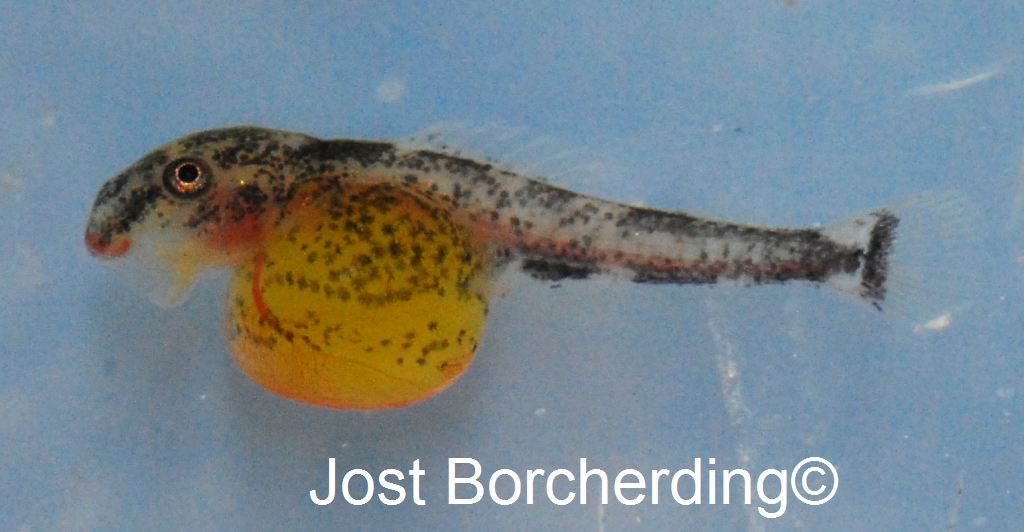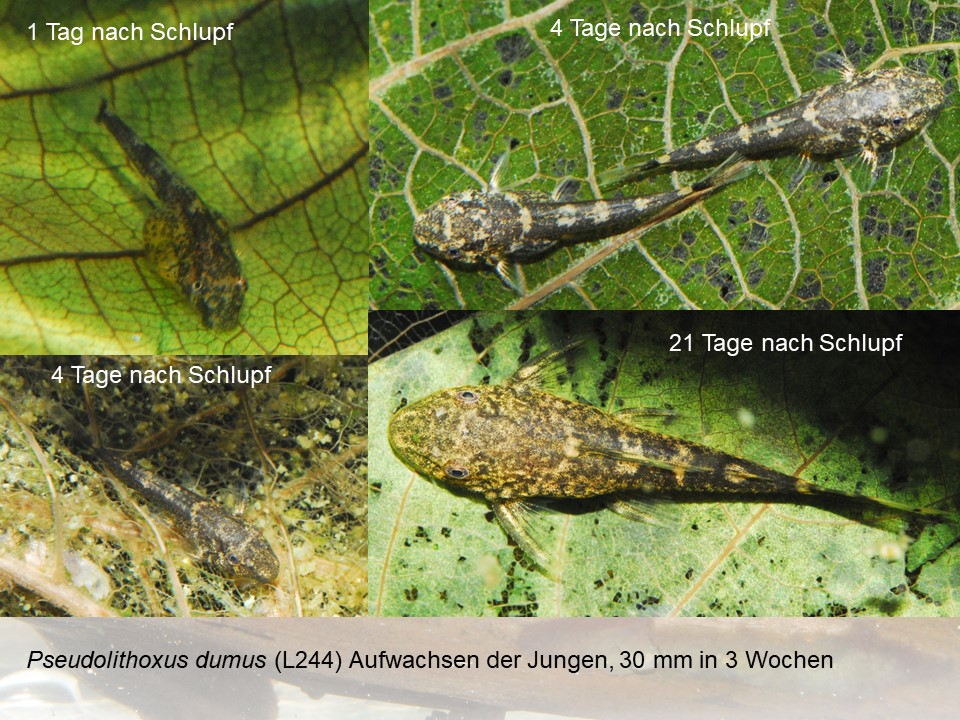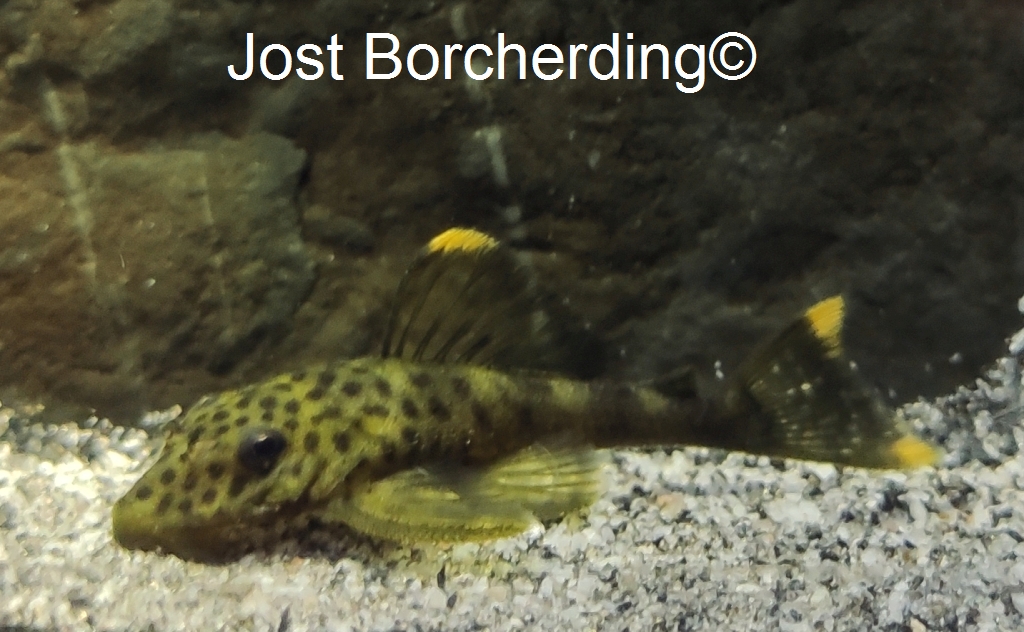Pseudolithoxus dumus
I bought my group of yellow-finned flying loricariid catfish from various dealers and private individuals throughout Germany from around 2013 onwards, it’s usually not that easy to get these animals. The biggest problem with these wild-caught animals is usually acclimatisation; the animals usually arrive here in Germany in poor condition and then there are often major losses until you have a well-functioning group together. And further down I can report on the successful breeding of these beautiful animals.
I had my first major breeding successes in 2019. As typical crevice breeders, the flying loricariids are dependent on appropriate aquarium furnishings. Not the typical caves, but lots of crevices and elongated horizontal or vertical structural elements are important for this group, which also includes the genera Lasiancistrus, Dekeyseria and a few more. In the following picture you can see the male of Pseudolithoxus dumus hanging from the ceiling and fanning the clutch.
After a breeding period of around 7 days, the young begin to hatch from the rather large eggs. The hatching larvae have a comparatively large yolk sac, but this is almost completely used up after around 4 days. The animals then enjoy eating walnut leaves as well as plant-based stamen food (spirulina). They grow surprisingly quickly and can reach the impressive size of around 30 mm TL after around 3 weeks.

